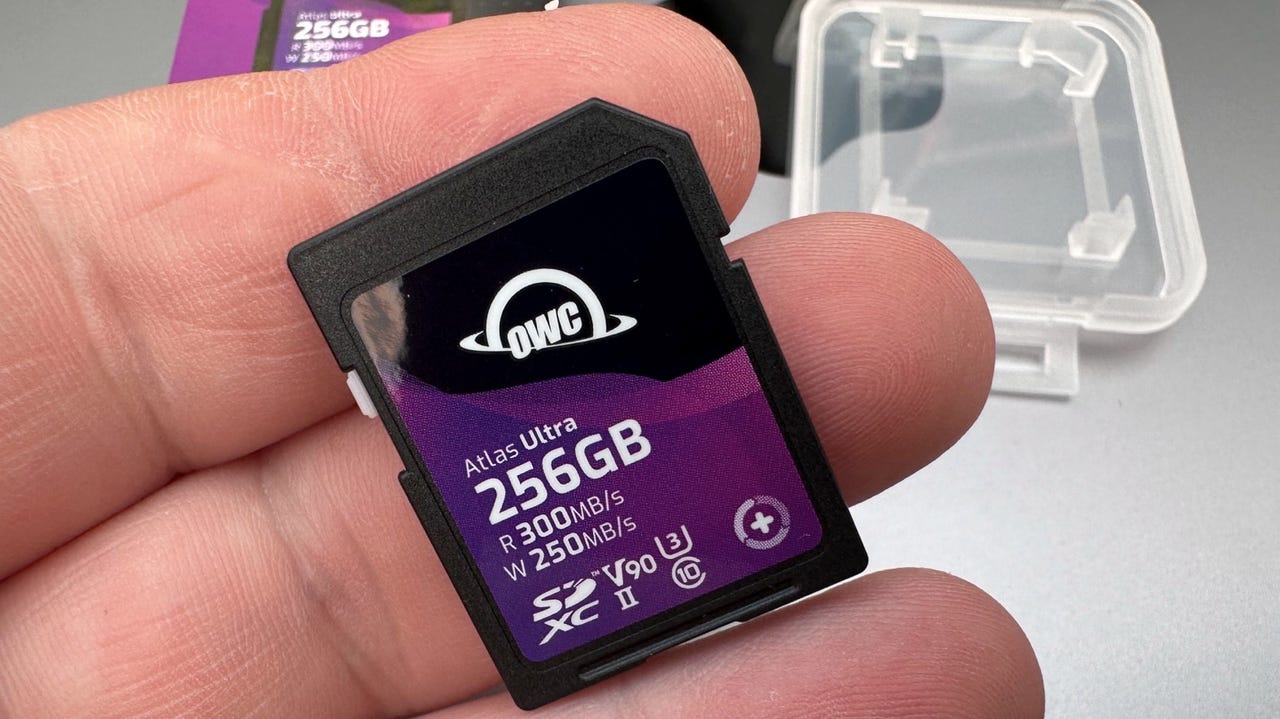'ZDNET Recommends': What exactly does it mean?
ZDNET's recommendations are based on many hours of testing, research, and comparison shopping. We gather data from the best available sources, including vendor and retailer listings as well as other relevant and independent reviews sites. And we pore over customer reviews to find out what matters to real people who already own and use the products and services we’re assessing.
When you click through from our site to a retailer and buy a product or service, we may earn affiliate commissions. This helps support our work, but does not affect what we cover or how, and it does not affect the price you pay. Neither ZDNET nor the author are compensated for these independent reviews. Indeed, we follow strict guidelines that ensure our editorial content is never influenced by advertisers.
ZDNET's editorial team writes on behalf of you, our reader. Our goal is to deliver the most accurate information and the most knowledgeable advice possible in order to help you make smarter buying decisions on tech gear and a wide array of products and services. Our editors thoroughly review and fact-check every article to ensure that our content meets the highest standards. If we have made an error or published misleading information, we will correct or clarify the article. If you see inaccuracies in our content, please report the mistake via this form.
OWC Atlas Ultra is the SD card for photogs who can't afford to lose a shot

OWC Atlas Ultra SD card.
I often come across people who spend thousands on cameras and lenses and drones, and then look for the cheapest storage media they can find.
This seems like a great idea, right up until the moment you offload your photos and video -- and you discover your valuable files are corrupted or lost.
Also: What do all those microSD and SD card numbers and letters mean?
One company that I trust with my captures is OWC. I use several of the company's products, from capturing on their storage cards, to ingesting photos and videos using their docks and readers, to storing the output on the company's external storage drives.
Recently, the company released a new line of storage cards, the Atlas Ultra.
View at AmazonOWC Atlas Ultra features
- Ultra-speed: Rated for up to 250MB/s write and 300MB/s read real-world speeds, making the cards the ideal choice for high-burst image sequence, RAW photography, and high bitrate 4K, 6K, and even 12K video recording
- Dependable: Delivers 90MB/s minimum sustained write speed for reliable operation
- Proven: Extensive performance testing in the highest settings of high-end cameras
- Tough: Rugged design that's bend/shock/X-ray resistant, and IP67 dust-proof and waterproof
- Compatible: Fully compatible with a wide variety of DSLR and mirrorless cameras
- Flexible: Backwards compatible with previous generation of SD devices and readers
- Bus type: UHS-II
- Rating: V90, U3
The OWC Atlas Ultra is a UHS-II SD card, hence the extra contacts on the back.
High-speed burst photography and 4K/6K video recording puts an enormous strain on storage media, and it is this workload that the Atlas Ultra is designed to handle. I've tested my sample 256GB Atlas Ultra SD card both in real-world tests and synthetic benchmarks, and it worked flawlessly all the time.
Also: The best cameras for photographers: Entry-level to pro
For real-world testing, I used my Sony A7RIV to shoot several hundred photos and a couple of hours of video at the camera's highest settings, and the card had no trouble keeping up.
The OWC Atlas Ultra can easily keep up with the demands put on it by the Sony A7RIV mirrorless camera.
For the benchmark tests, I used both Blackmagic's Disk Speed Tool and AJA System Test, using the built-in SDXC card slot on a 16-inch M2 MacBook Pro. Before testing, all the cards were formatted using the SD Association's free SD Card Formatter, available for both Mac and Windows.
Also: Boost your security and productivity with the top Mac apps
At the highest possible settings for each test, the card delivered excellent performance, coming very close to the rated speeds.
Benchmark results for the OWC Atlas Ultra from Blackmagic Disk Speed Test and AJA System Test.
Another feature I like my SD cards to have is durability. Ideally, they're going to be kept in nice little crushproof, dustproof, waterproof cases. In reality, they can find themselves in the bottom of my camera bag amongst all the detritus, and stored beneath a camera body or lens.
The OWC Atlas Ultra is built rugged, designed to be bendproof, shockproof, and X-ray resistant, and IP67-rated for dust and water proofing.
The Atlas Ultra is bendproof, shockproof, and X-ray resistant, and IP67-rated for dust and water proofing.
With prices ranging from $64.00 for the 64GB version to $499.99 for the 512GB cards, prices are close to $1 a gigabyte, making these cards a premium purchase.
However, you're getting one of the very best cards on the market that can handle the heaviest 6K workloads from cameras such as the Blackmagic URSA mini Pro 12K.
